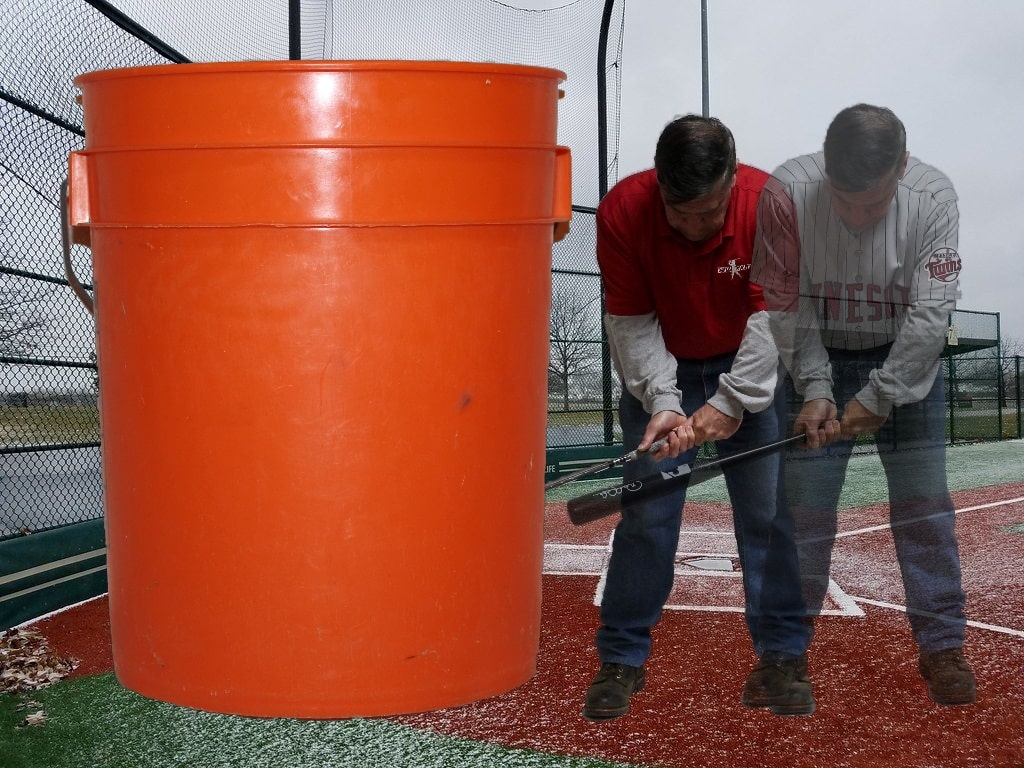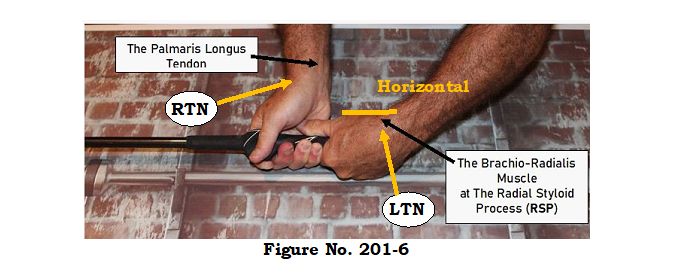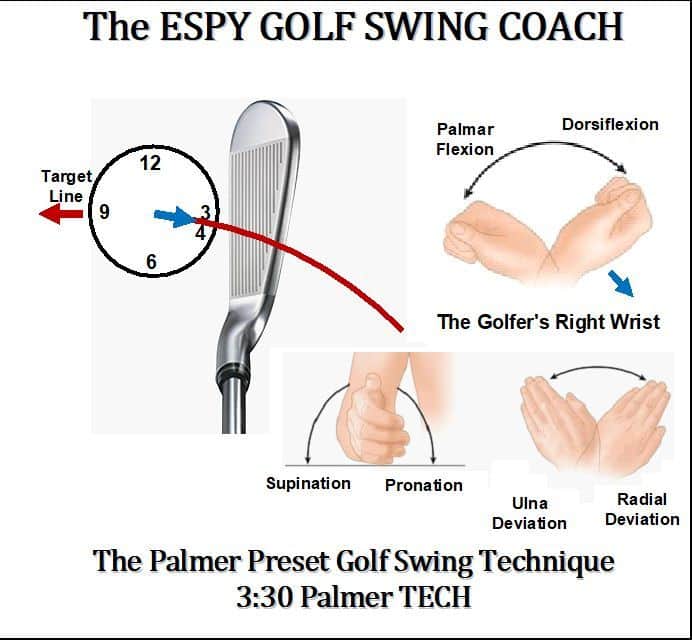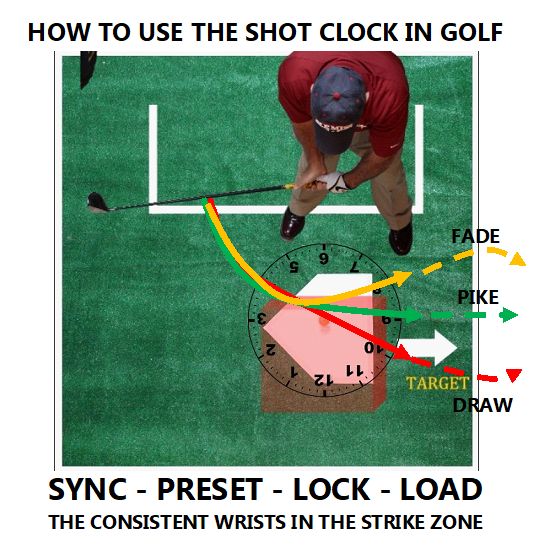Pickup The Sport of Golf for a Healthy Lifestyle – Golf is a sport that can be played for a lifetime from age 8 to 98 and is the best business decision you will even make. Start with taking your golf swing from the batter’s box to the Tee box with the present technique.
Taking Your Golf Swing from the Batter’s Box to the Tee Box: Mastering the Preset Wrist Action with Palmar Flexion and Pronate Technique
I write articles on health and fitness as part of an Age-Defying Lifestyle. As a significant part of one’s health and fitness are including a sport(s). Sports provide you with an incentive to eat healthily and stay fit and golf is one of the best sports to accomplish this.
Below, I have six short instructional videos on the Golfer’s Palmer-Super Golf Swing Technique to provide you confidence to hit more fairways and greens in regulation. But first why does the Golfer’s Palmer-Pro Technique work?
Golf and baseball may seem worlds apart, but their swings share a surprising kinship with the same three wrist actions. Both demand explosive power, precise timing, speed, and a fluid motion to drive a ball with accuracy.
For baseball players looking to transition their athletic prowess to the golf course, the key lies in adapting the mechanics of the batter’s box swing technique and strike zone to the tee box and from the fairway to the green. Central to this transformation is the preset wrist action—specifically, the palmar flexion and pronate technique, something we did from childhood, so these are natural motor mechanics—which account for roughly 80% of an effective golf swing. This guide will break down how to leverage your baseball swing instincts, refine them with this wrist technique, and unlock a powerful, consistent golf swing.
The Batter’s Box to Tee Box Connection The Orange Bucket Superimposed Baseball & Golf Swings

In the batter’s box, a hitter’s swing is a symphony of controlled maneuvers. The wrists start the preset and initiate the hips motion, the torso rotates, and the forearms with the wrists deliver the bat through the strike zone with speed and precision. Golf requires a similar sequence, but the target is stationary, and the club’s design demands a different plane and release. The challenge for baseball players is to channel their rotational power and hand-eye coordination into a swing that prioritizes finesse over brute force.
The golf swing’s core components—grip, stance, backswing, downswing, and follow-through—mirror the kinetic chain of a baseball swing. However, the golf club’s longer shaft and the ball’s position on the ground (or tee) require adjustments. This is where the Palmar Flexion – Super into the Cock-Lock Position wrist action, shown below, helps the baseball player to transition into their golf swing.

The preset wrist action, particularly palmar flexion (cocking the lead wrists backward) and pronation (rotating the trail wrist into the Lock Position), becomes the linchpin for translating baseball athleticism into golfing success. This technique presets the wrists early, ensuring proper clubface alignment and maximizing power through impact.
Understanding Palmar Flexion and Super (Supination)
Palmar flexion refers to the backward cocking of the lead wrists, where the clubhead moves along the target line backward. This action sets the club on the correct plane during the backswing, allowing for a natural, powerful release through the ball. Pronation, meanwhile, involves rotating the trail wrist (right wrist for right-handed golfers) for torque. This wrist action allows the clubface to square the clubface and prevent an open or closed face at impact, what causes slices and hooks. Together, these movements create a “preset” wrist position that simplifies the swing, reduces variables, and accounts for 80% of its effectiveness.

Why 80%? The preset wrist action establishes the swing’s foundation. It aligns the club, optimizes the swing plane, and ensures the hands lead the clubhead through impact—critical for distance and accuracy. For baseball players, this technique feels intuitive, as it mimics the wrist snap like you’re using to bullwhip-whip action the bat through the hitting zone. By mastering palmar flexion and supination, you can unlock a swing that feels natural yet tailored to golf’s unique technique.
Step 1: Grip and Setup
Start with a slightly strong grip, like how you’d hold a bat, but with slight adjustments. Place the club in the fingers of your left hand (for right-handed golfers), with the thumb running down the shafts in a 1:30-to-2:00 Position. The right-hand fits over the left thumb, using the interlocking, overlapping, or baseball style grip. This grip promotes wrist mobility, essential for palmar flexion and supination.
Your stance should be shoulder-width, with the ball positioned just inside your left heel for a driver. Flex your knees slightly and tilt your spine forward about 25-30 degrees, maintaining a relaxed posture. Baseball players often stand too upright, so focus on bending at the hips to align your body for the swing plane.
Step 2: Presetting the Wrists
Start your golf swing by presetting your wrists using palmar flexion and supination maneuvers. There are two pivotal points to concentrate on, called Ulna Styloid Process, the nodule over your pinky knuckle. As you address the ball, cock your wrists backwards (Palmar Flexion) so the clubhead following the target line back from the golf ball. Simultaneously, rotate your trail wrist backwards both at the ulna styloid process. This places your wrists into the Cock-Lock Position.
This action sets the club on the proper plane early with the lead thumb (left thumb for the right-handler) indicating the proper swing plane, for the right-handed golfer the left thumb indicates the swing plane while the right thumb indicates the manipulation of the clubface. Hold the preset, Cock-Lock Position just for a split second to ingrain the feel, then begin your backswing.
Step 3: Backswing and Transition
From the preset position, initiate the swinging of the club handle to the top of the swing in the direction of the lead thumb. Allow Rotate your torso using the forearms, keeping your left arm relatively straight and allowing the wrists to hinge naturally, radial deviation maneuver. The palmar flexion you set earlier ensures the club stays on plane, with the shaft pointing roughly parallel to the target line at the top.
The preset wrist action simplifies the transition to the downswing, as the club is already aligned for a powerful release and square with the golf ball. I like to imagine a shot clock where I come into the golf ball in the 3:30 Position to insure an in-to-out swing path, shown below:
Step 4: Downswing and Impact
The downswing mirrors the explosive hip drive of a baseball swing. Start by just dropping the forearms that with fire your hips toward the target, letting your arms and club lag behind. The preset wrist action ensures the clubface remains square as you approach impact. Feel your wrists “release” through the ball, with palmar flexion transitioning to a square impact while pronation provides the turbocharged torque action for clubhead speed with the pronation of the right wrist through the ball.
At impact, your hands should lead the clubhead, with your body rotated open to the target. This position maximizes power and prevents the “flip” common among baseball players, where the hands roll too early, causing slices or hooks. The pronate technique keeps the clubface square, delivering the ball straight and far.
Step 5: Follow-Through
A balanced follow-through is the signature of a well-executed swing. Allow your body to rotate fully, with your weight shifting to your left side and your right heel lifting naturally. The preset wrist action ensures a smooth release, so the club finishes high and relaxed, much like the follow-through of a home run swing.
Drills to Reinforce Technique
- Wrist Preset Drill: At address, practice palmar flexion and supination (super) without taking the handle of the club to the top of the swing. Cock and rotate your wrists 10 times, focusing on the clubface squaring up. This builds muscle memory.
- Half-Swing Drill: Take half-swings, starting with the preset wrist position and focusing on hip rotation and wrist release. This helps baseball players avoid over-swinging.
- Mirror Drill: Set up in front of a mirror and check your wrist angles at address, top of the backswing, and impact. Ensure palmar flexion and pronation are consistent.
Overcoming Baseball Habits
Baseball players often struggle with two habits: an overly steep swing plane leading to slices. The preset wrist action counters with a flatter the swing path and emphasize body rotation. Additionally, baseball swings are designed for a moving ball, so practice hitting golf balls off a tee through a throw down Home plate.
Conclusion
Transitioning from the batter’s box to the tee box is a journey of adaptation, but the palmar flexion and pronate technique makes it seamless. By presetting your wrists, you unlock 80% of the golf swing’s potential—alignment, power, and consistency. For baseball players, this technique feels like home, blending the explosive athleticism of a home run swing with the precision of a 300-yard drive. With practice, drills, and a focus on this wrist action, you’ll be crushing fairways in no time, proving that the skills homed in the batter’s box can shine just as brightly on the tee box.
My Videos of the Orange Bucket Challenge
Introduction Video:
Walk-through Video:
Demonstration Video of hitting five (5) 290- yard tee shots to withing 15- feet of the orange bucket:
WJTV-12 Promo that they ran leading up to my demonstration on WJTV-12 Sports Zone Show in 2021:
Tick-N-Tock Putting Technique
Bunt Type Pitch/Chip Shot
The Details of the Palmer-Pro Golf Swing Technique is in my book that is on Kindle in E-Book and Paperback:
I also have 2 newly released book the revivals what is unfolding in the Middle-East





